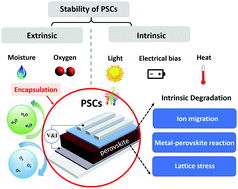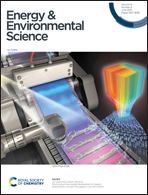Pushing commercialization of perovskite solar cells by improving their intrinsic stability
Abstract
Despite the rapid progress in the power conversion efficiency (PCE) from 3.8% to 25.5% with ten years of effort, the real outdoor applications of perovskite solar cells (PSCs) are still significantly limited by their poor device stability. The factors determining the stability of PSCs can be divided into extrinsic and intrinsic factors. Advanced encapsulation techniques can be applied to only exclude the effect from extrinsic environmental factors such as moisture and oxygen in ambient air. The intrinsic stability issues of PSCs are difficult to thoroughly resolve by device engineering, determining the short life span of devices. Therefore, in this review, we only focus on the intrinsic stability of PSCs, especially the stability related to the properties of the perovskite active materials. Several degradation mechanisms of perovskite materials resulting from (1) ion dissociation and migration, (2) metal–perovskite reactions, and (3) residual strain are thoroughly analyzed and the corresponding possible strategies to improve the device stability are summarized. Finally, the perspective of research directions in the perovskite photovoltaic field for future large-scale deployment has been discussed. This review will draw tremendous attention from worldwide researchers to the intrinsic stability study of perovskites and provide useful guidance to further improve the operational stability of PSCs.



 Please wait while we load your content...
Please wait while we load your content...